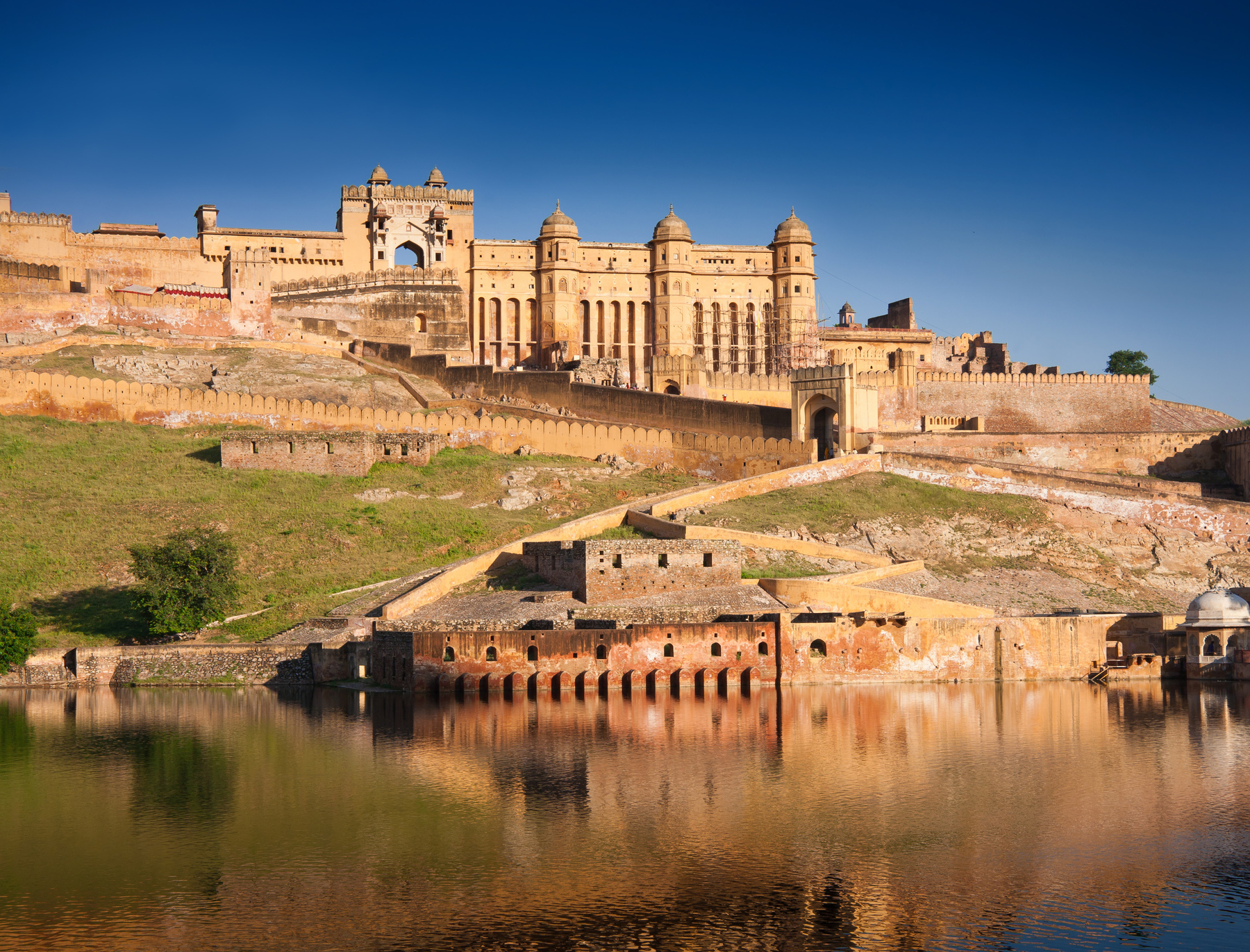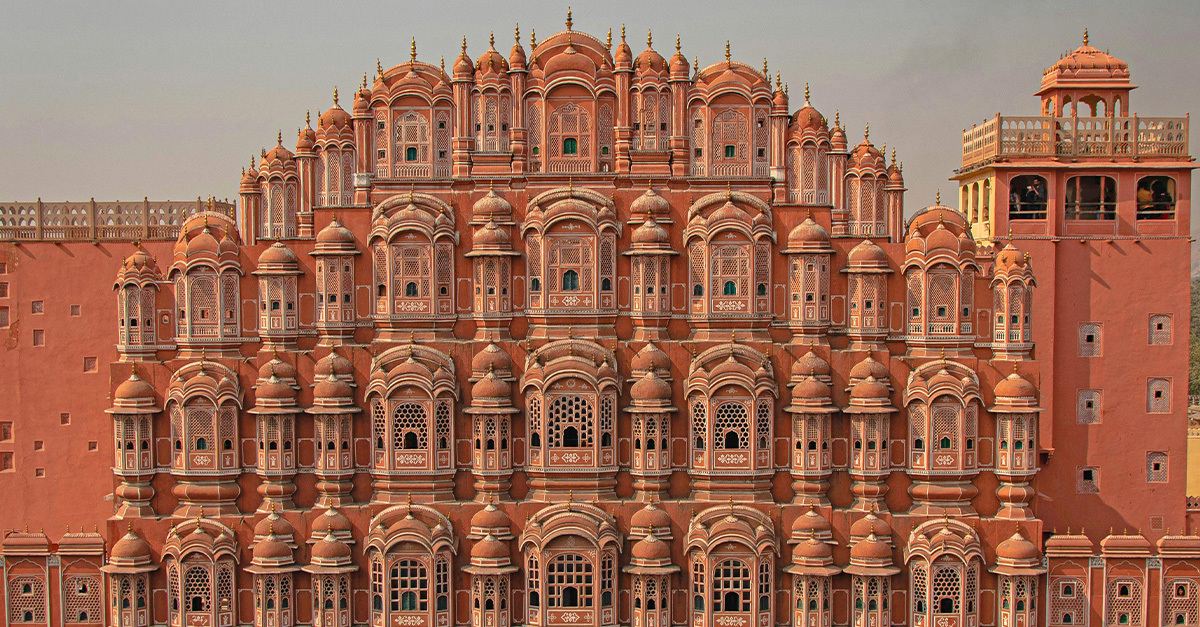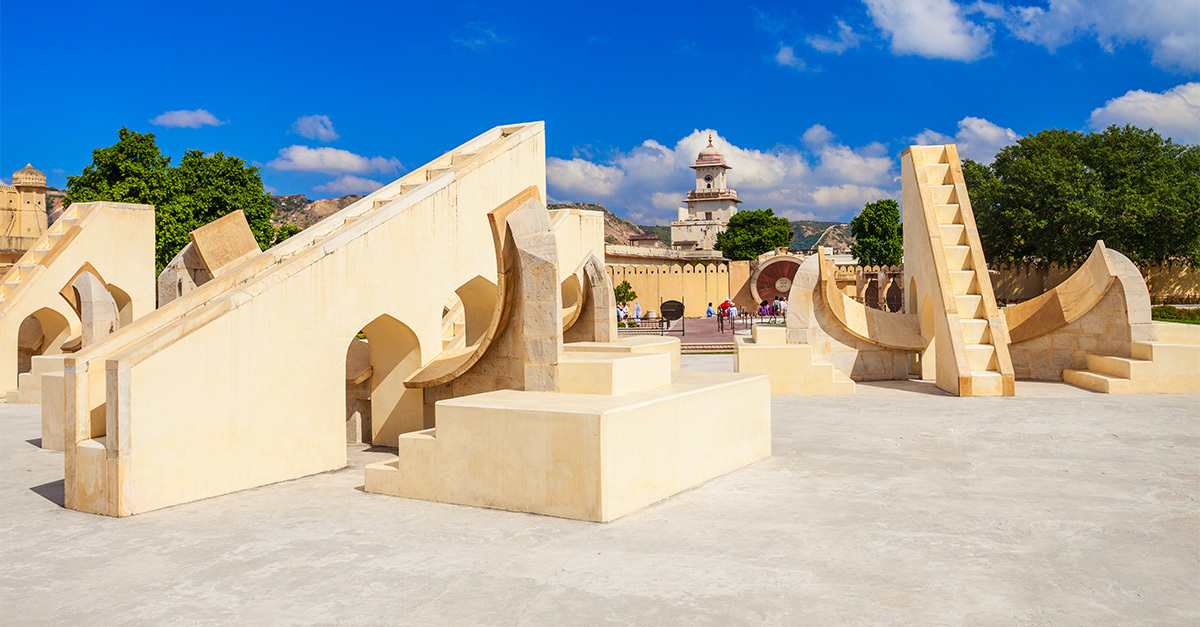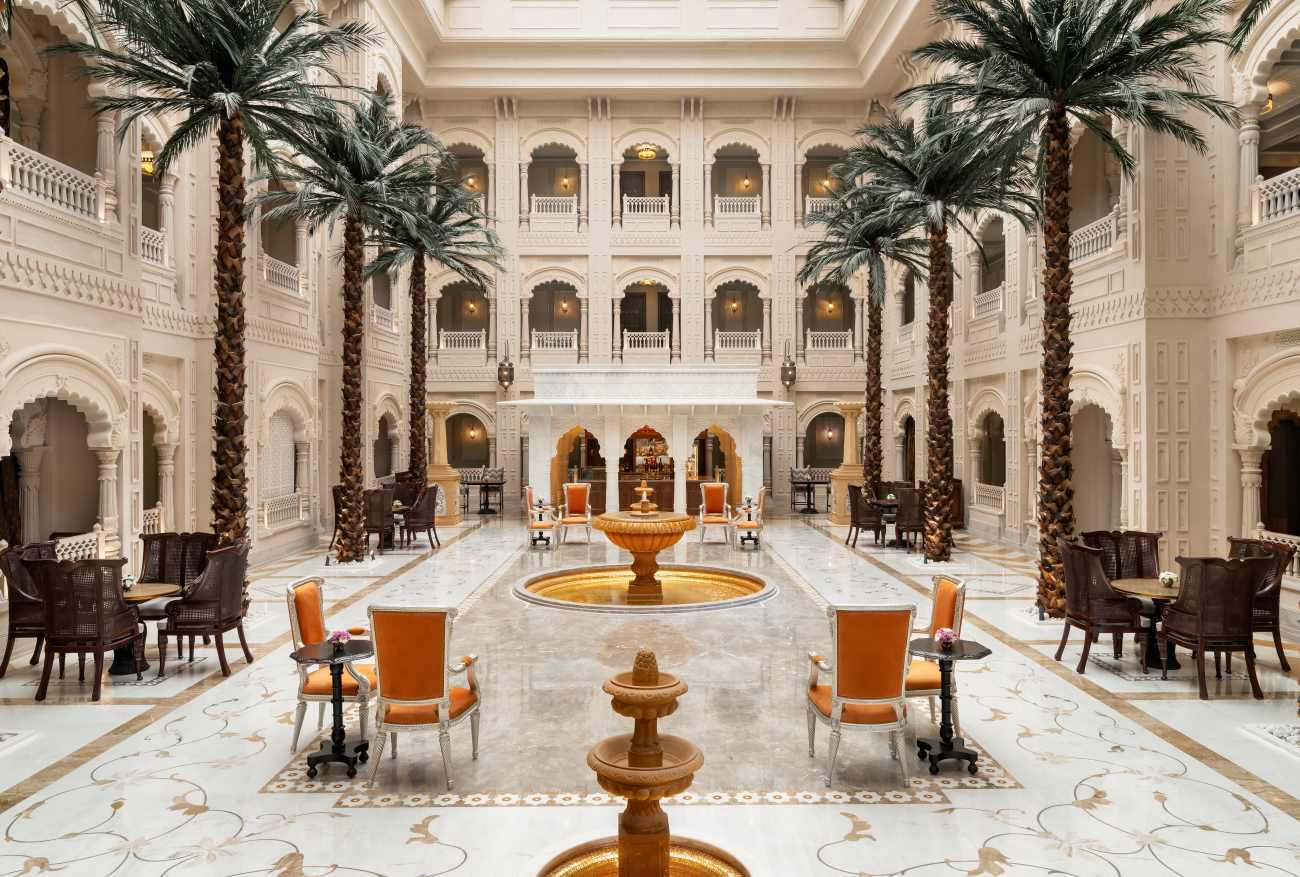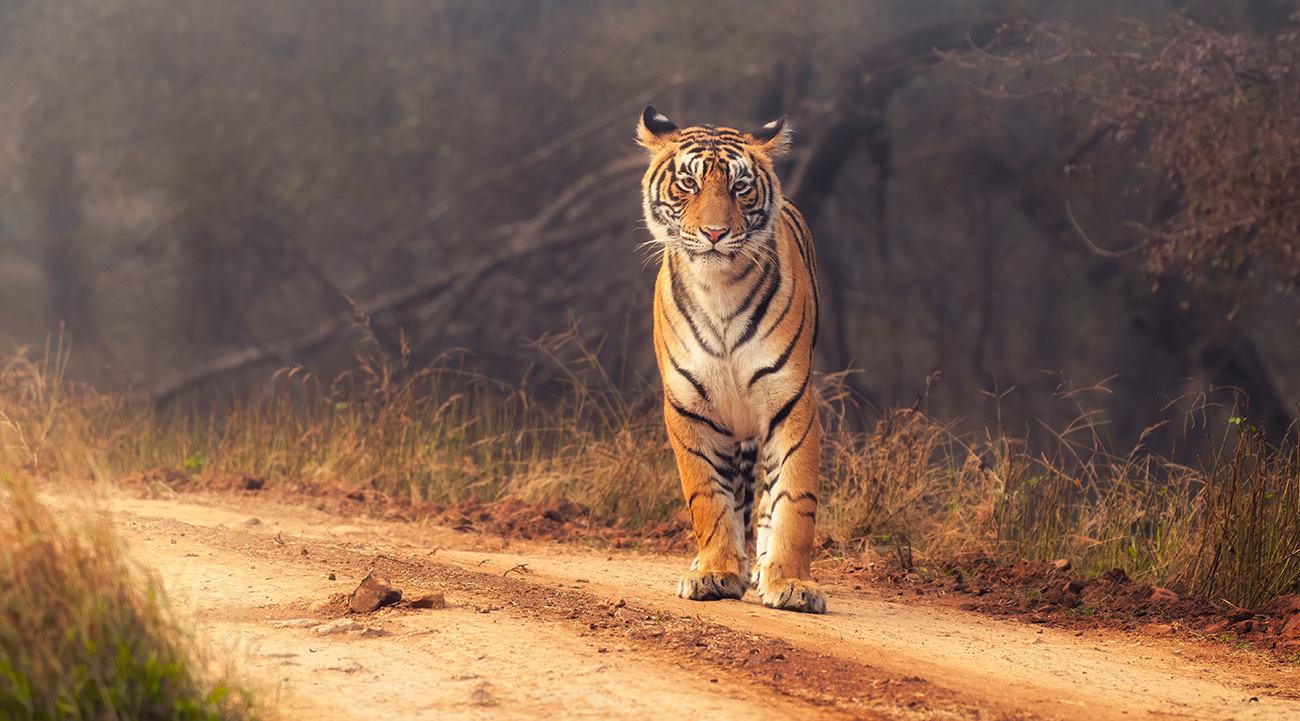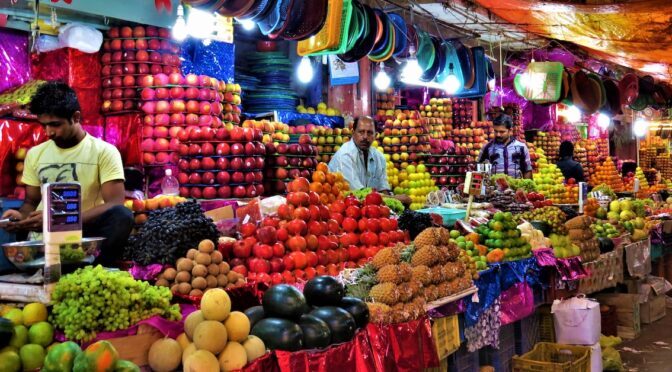Pretty in pink: The enduring allure of Jaipur
A rich regal history and architectural marvels make the city a must for any India itinerary
Deep in Jaipur’s historical centre, where ornate, coral-hued buildings stand on every corner and the beguiling sound of traditional music fills the air, the charm of India’s fabled Pink City is impossible to resist. The sense of history here is palpable: from majestic palaces to impressive forts, architectural masterpieces tell the stories of the ancient maharajas (kings). This history is complemented by a hearty dose of Indian culture, evident in the city’s lively markets, captivating artwork and the rainbow of colours seen everywhere from shop windows to the traditional outfits worn by local people. The city itself is a Unesco World Heritage Site, having been awarded the status in recognition of its exceptional city planning and easy-to-navigate streets – perfect for tourists and a welcome change from the labyrinthine nature of other Indian cities such as Delhi and Mumbai. With a throng of luxury hotels and more openings in the pipeline, clients seeking an Indian adventure would be well advised not to overlook the Pink City.
Why sell it?
Those keen to explore India will no doubt already have Jaipur on their list. The city forms one of the three points of the country’s Golden Triangle, the popular tourist circuit that also takes in Delhi and Agra. Each of these cities showcases a different side of India: the capital Delhi is frenetic and buzzing with life; peaceful Agra is synonymous with the iconic Taj Mahal; and Jaipur is a treasure trove of historical, architectural and artistic wonders. A tour of the Golden Triangle is the best way to experience Jaipur and, as most itineraries tend to conclude in the city, it’s easy to extend a stay here to ensure no corner is left unexplored.
What’s new?
Since the destination recovered from its pandemic-induced tourism slump, the Indian government has been on a mission to transform the state of Rajasthan into a premier destination for visitors, beginning with its capital, Jaipur. Perhaps the most exciting additions to the city’s luxury hotel roster are Raffles Jaipur, which opened in July, boasting 50 rooms and a design that draws inspiration from the exquisitely crafted Mughal architecture, and the 150-room Anantara Jewel Bagh Jaipur, which is set to welcome its first guests later this year. There are also a few new arrivals on Jaipur’s art and culture scene. The Museum of Meenakari Heritage, which was unveiled in April, spotlights one of the city’s many crafting legacies – the enamelling art of meenakari. The history of this practice is traced through the museum, which also houses a luxury jewellery shop. Meanwhile, The Palace Atelier boutique is a must-visit for a little retail therapy. The museum[1]meets-concept-store sells clothing and souvenirs inspired by Jaipur’s illustrious past – think bold designs, exciting patterns and vibrant colours.
When to go
To avoid the stifling heat, plan a visit between November and March, when temperatures don’t exceed 32C – a refreshing change from the mid-40s that aren’t uncommon between May and August. While the months between November and March are cool and dry, they also see the highest number of tourist arrivals. So if clients are keen to avoid the busiest period, recommend a visit in the shoulder season, from April to May. It may be slightly warmer, but travellers will be rewarded with fewer crowds and quieter visits to the main attractions.
Where to stay
The finest hotels sit on the outskirts of Jaipur’s lively main hub, offering the best of both worlds with easy access to the action but enough distance to ensure tranquillity. The Oberoi Rajvilas is set among 13 hectares of lush gardens and has golf carts on hand to ferry guests from the elegant rooms and tented villas to the main building that houses two restaurants, a bar and boutique gift shop. Elsewhere, there are four Taj properties scattered across the city. Each has been tastefully designed with Jaipur’s regal history in mind, featuring striking turreted buildings, showstopping suites and tranquil courtyards. For something more boutique, Laalee guesthouse has just nine rooms, as well as a verdant garden, plunge pool, library, lounge and restaurant.
What to do
Exploring Amber Fort should be high on the must‑do list for any visitor to Jaipur. Perched atop a hill and a short ride in a 4x4 vehicle from the city centre, the former maharaja residence offers plenty to enjoy, whether that be admiring the intricate artwork embossed on the sandstone walls or exploring the Hall of Victory and its mirrored ceiling. Back down in Jaipur’s main hub, the city’s Jantar Mantar observatory (there are five in India with the same name) features 19 majestic instruments that tell the time and track the position of the sun. Though they were built in 1734, the instruments remain highly precise – the sundial tells the time to an accuracy of about two seconds. To truly immerse themselves in Jaipur’s hustle and bustle, visitors should head to one of the many bazaars dotted around the city, which sell everything from flamboyant dresses to handcrafted jewellery.
What to see
Historical charm is interwoven in Jaipur’s DNA, and visitors can get a taste of its rich regal past simply by wandering the central streets. The dusky‑pink hue that coats much of the architecture has been a defining characteristic of the city since Queen Victoria’s eldest son Edward visited India in 1876, prompting Jaipur’s maharaja to paint the buildings in the symbolic colour of hospitality – pink. To explore further, recommend visitors head to City Palace, the complex that was once the headquarters for Rajasthan’s rulers, and remains a royal residence to this day. Among the courtyards and buildings that can be explored, the Maharaja Sawai Man Singh II Museum houses an impressive collection of artefacts, including the gangajalis – two astoundingly large silver urns that were used to transport water from the sacred River Ganges, and remain the biggest items in the world to have been crafted from sterling silver. Near City Palace sits Hawa Mahal, the fairytale-esque building also known as the ‘palace of winds’. The delicately designed five-storey structure was built in 1799 to allow ladies of the royal household to watch processions in the streets below without being seen, and is now open for the public to enjoy stunning views across the city and a look around the museum.
Where to dine
Across Jaipur, there are plenty of sumptuous options for visitors keen to get an authentic taste of India’s culinary scene. Baradari, nestled within the City Palace complex, serves five-star curries and traditional Rajasthani dishes, including the simple onion and potato-based special aloo pyaz ki sabzi. Exclusive bar and kitchen Swinton House comprises two wings – The Yard serves international fusion cuisine in its open courtyard, while The Albion is a lavish lounge where guests can enjoy Pan-Asian dishes. One of the newest additions to the city’s range of stylish dining venues is Paro, which serves tasty tikkas and biryanis, as well as cocktails that pay homage to Jaipur (shehar, for example, is a rose-infused gin with a pink hue that reflects that of the city).
Pair it with
In India, the tiger has long been a symbol of power, beauty and bravery – so it comes as no surprise that catching a glimpse of this majestic creature is a top priority for many visitors. But while camels, elephants and bulls can be spotted in Jaipur, clients need to venture a little farther for a sighting of the elusive cat. A three-hour drive from the city, Ranthambore National Park has more than 80 Bengal tigers wandering its grounds, making it the perfect extension for an animal lover’s trip to Jaipur. Twice-daily safaris offer visitors the chance to spot the cats roaming the forest or cooling off in one of the lakes. Ranthambore is also home to leopards, wild dogs and gazelles, as well as a host of birdlife. The Oberoi Vanyavilas Wildlife Resort, nestled in the park’s grounds, is the obvious choice for clients keen to see a tiger. Accommodation is in tented villas, and the property has its own 4x4 vehicles to take guests deep into the reserve
